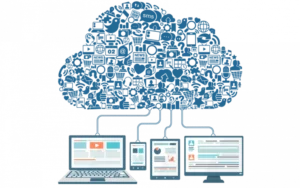Organisations of all sizes are scrambling to find ways to enable their staff to work from home. With the country on Alert Level 4 now, only essential businesses are allowed to stay open.
Just take a look at this Google Trends report that shows the interests in the topic over time for the term “working from home” here in New Zealand.

Other phrases like remote work or telecommuting also show the same trend. And it looks the same for other countries as well. The only difference is that some countries are hitting that spike a week or two earlier than here in New Zealand. That’s most likely because they have been hit with the coronavirus first.
So, is your business ready for remote work? Here are 7 questions you need to answer.
- Do you have a unified tool for communication?
- Do you have a collaboration software?
- Where do your staff store files and documents?
- Can you access these tools/apps/software from outside your office?
- Do your staff have the proper training for each of these tools?
- Do your staff have the proper equipment so they can work from home?
- Do you have security measures in place for your staff’s devices?
If you are having trouble answering them, or you know the answers don’t look good, you might need someone to help guide you through this situation. We can help.

7 Questions You Need to Answer to Find Out if You’re Ready to Work From Home
1. Do you have a unified tool for communication?
As you probably already realized, communication is essential especially during these times. Having a single place of internal communication is critical if you want to move fast.
Sure, you might have SMS, phone calls, Skype, Messenger, WhatsApp, Telegram, and other tools out there. But if communication is fragmented, it’s difficult for people to find the information they need when they need it.
That’s why using tools like Microsoft Teams makes it easier for everyone since it supports different options (audio, video, chat) in one place.
2. Do you have a collaboration software?
In the workplace, you can walk up to somebody or even invite them to a conference room if you wanted to meet. But if everyone is working remotely, it’s logistically impossible.
Unless you have a collaboration tool in place.
It’s unrealistic to have to chat someone or video call them every single time you need to say something. You (and more importantly, they) won’t get anything done.
That’s why project management tools like Asana and Trello are popular because you can work on projects and tasks with other people within the system. You can communicate everything about the project, like providing feedback or adding tasks, inside the system.

3. Where do your staff store files and important documents?
Do you use a file server in your organisation, or does everyone store the files on their local computer?
What about hard copies? Are they in the office in a central location? Or are they on the desks of each of your staff?
Answering these questions is important because if you don’t have a single place to store your files, you can end up with tons of duplicates. This results in inefficiencies that can lead to not just wasting time finding the most updated version, but can also contribute to hardware issues.
This becomes more prominent when you suddenly have to implement telecommuting in the business.
4. Can you access these tools and files from outside the office?
The first three questions are simple and easy to answer. Most organisations have some form of communication or collaboration tools setup. But because these are in the form of legacy software, it’s designed only to run within the company network.
And with remote work, that is certainly not possible.
If you want your team to work from home during this pandemic, they have to be able to do the following:
- communicate with each other efficiently —that means using a unified tool for communication
- collaborate with each other effectively—that means using a project management tool to handle storing projects and other work
- access important files and documents—that means everyone has the proper access to important documents with the latest versions
If you are not sure or the answers to these questions don’t look good, we can help you through this situation.
To have 100 staff working remotely and the whole organisation still connected within about three days is a big effort.
Glenn Manson, CFO, Odyssey
5. Do your staff have the proper training for each of these tools?
Using an app is one thing. Receiving the proper training to do your work using that tool is another.
Without proper training and education, you and your team might be underutilizing the software.
For example, if you are using Microsoft Teams, you might only think of it as a chat and video conferencing tool. But it goes way beyond that. Watch this short video on how you can integrate other apps to MS Teams.
6. Do your staff have the proper equipment so they can work from home?
This question often gets overlooked.
Not everyone has the proper equipment to handle the work they do at their homes. Not everyone has computers as well.
But this doesn’t stop at computers and laptops.
- Do they have internet? Does it have enough speed and bandwidth to handle the new work?
- What about speakers, video camera, and other peripherals (graphics drawing tablet and stylus,
Of course, all of these would depend on the nature of your business.
Finding the answers to these questions will help you understand what else you need to do in order to implement remote work effectively.
For example, you find out your half your staff doesn’t have the proper equipment at home— whether they are underspec’d or don’t have devices—but your office has them. What do you do?
- Are they allowed to take home the devices?
- Can it run on their home network?
- Do you have a policy for taking devices out from the office?
7. Do you have security measures in place for people working from home?
Some might overlook this aspect, but most business networks have some sort of firewall and security measures in place. Each device might have anti-malware software installed and other special configurations that reduce security risks.
But personal devices might not have them. How can you…
- navigate through this situation?
- “force” everyone to install an antivirus solution?
- protect your company’s sensitive data while allowing your staff to continue their work uninterrupted?
Of course, there are other security measures you can do to protect your business’ data like requiring multi-factor authentication to access your accounts.
But then again, those only work if you are already using cloud-based tools like Office 365.
New Zealand’s National Cyber Security Centre (NCSC) is encouraging organisations to maintain a high level of cyber security resilience and awareness during the national response to COVID-19. Cyber actors are likely to exploit public concern around COVID-19, and all organisations should ensure they have robust cybersecurity measures in place.
- donating to a fake World Health Organisation COVID-19 Response Fund
- paying a bitcoin ransom or risk their family being infected with COVID-19
- downloading malware from COVID-19 maps, or
- entering their details into phishing websites.
You can find more about these covid-19 related cyber attacks from CERT NZ
Conclusion
Working remotely requires next-level communication skills and increased personal responsiveness. This applies to all levels of the organisation.
Here at iT360, we’ve been working remotely a few weeks now. Staying connected with one another through small acts such as these can really go a long way.
If you need help transitioning to remote work, we can help.


